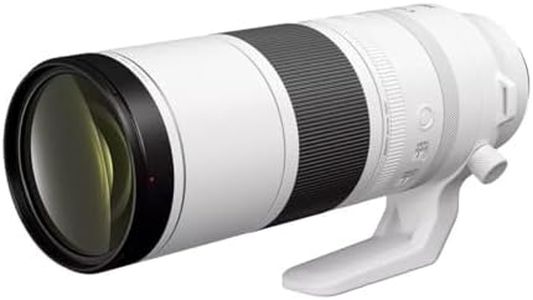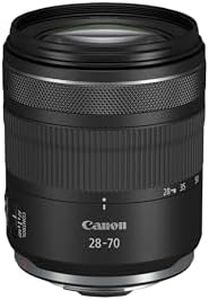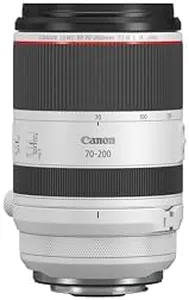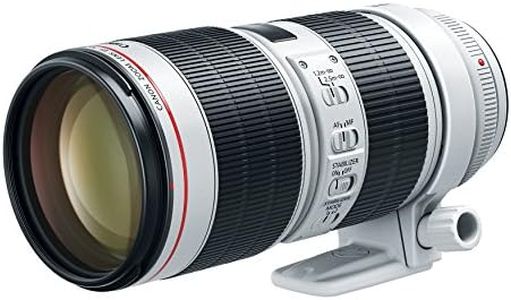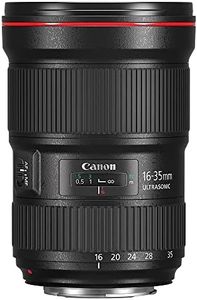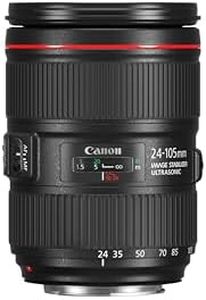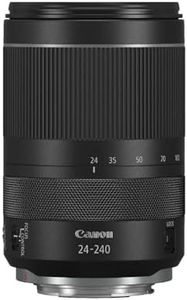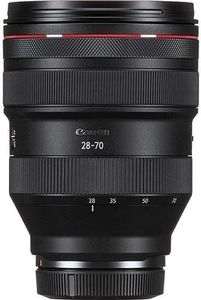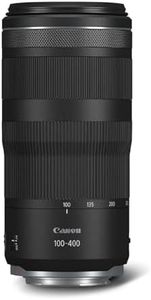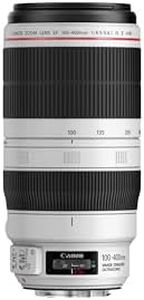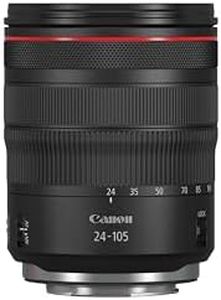We Use CookiesWe use cookies to enhance the security, performance,
functionality and for analytical and promotional activities. By continuing to browse this site you
are agreeing to our privacy policy
10 Best Canon Zoom Lenses
From leading brands and best sellers available on the web.By clicking on a link to a third party's website, log data is shared with that third party.
Buying Guide for the Best Canon Zoom Lenses
Choosing the right Canon zoom lens can transform your photography by letting you capture a wide range of scenes with a single lens. Whether you are interested in landscapes, portraits, wildlife, or sports, the right zoom lens expands your creative options. It's all about matching your individual shooting style, your camera's compatibility, and the situations in which you shoot most often. Understanding the key specifications will help you make a confident choice and ensure your lens fits your goals.Focal Length RangeFocal length range tells you how much you can zoom in or out with your lens, usually shown in millimeters (like 18-55mm or 70-200mm). A lower number means a wider field of view (great for landscapes or group shots), while higher numbers bring distant subjects closer (ideal for wildlife or sports). Lenses with a focal range like 18-135mm are versatile for all-around shooting, while something like 70-300mm is mostly for distant subjects. Think about what you'll be shooting most: if you want to capture both wide scenes and faraway details without changing lenses, look for a mid-range zoom; if you want to specialize in sports, wildlife, or portraits, go for a lens with a longer focal length.
Aperture (Maximum Aperture)Aperture measures how much light your lens can let in, described with an f-number like f/2.8 or f/4-5.6. A lower f-number means a wider opening, allowing more light for brighter images and better background blur (bokeh), which is great for portraits or low-light scenes. Some zoom lenses have a fixed maximum aperture (like f/2.8 throughout the zoom range), while others change as you zoom in (like f/3.5-5.6). Fixed apertures are better for consistent performance but may be heavier and larger. If you shoot in dim environments or want creamy backgrounds, prioritize a lower f-number. For everyday or travel use, a variable aperture is more common and usually lighter.
Image Stabilization (IS)Image stabilization helps reduce blur from shaky hands, especially at slower shutter speeds or longer zoom ranges. Canon lenses often call this 'IS.' Lenses with IS are especially helpful if you shoot indoors, at night, or without a tripod. If you find yourself taking photos in low light or zoomed in a lot, choose a lens with this feature. If most of your shots are in bright daylight or on a tripod, it may be less critical.
Autofocus Motor TypeThe autofocus motor determines how fast and quiet your lens focuses. Canon uses terms like USM (Ultrasonic Motor), STM (Stepping Motor), or plain DC motors. USM motors are fast and good for stills and action, STM motors are smoother and quieter for video, and DC motors are basic. Consider a USM lens if you mostly shoot quick action or events, and STM if you plan to record video or prefer very quiet, smooth focusing.
Lens Compatibility and MountNot all Canon zoom lenses fit every Canon camera. Some lenses are made for APS-C (crop sensor) cameras (often called EF-S or RF-S), while others are for full-frame cameras (EF or RF). Make sure the lens mount matches your camera body (e.g., EF, EF-S, RF, RF-S). If you have plans to upgrade your camera in the future, consider lens compatibility for flexibility.
Size and WeightZoom lenses can vary a lot in size and weight. Heavy, bulky lenses can be tough to carry around all day, while more compact ones are convenient for travel and casual shooting. If you want the best optical quality and features, the lens may be larger. For everyday or on-the-go use, a smaller, lighter lens may be best. Think about how you’ll carry your camera and how much weight feels manageable for your typical shooting sessions.

